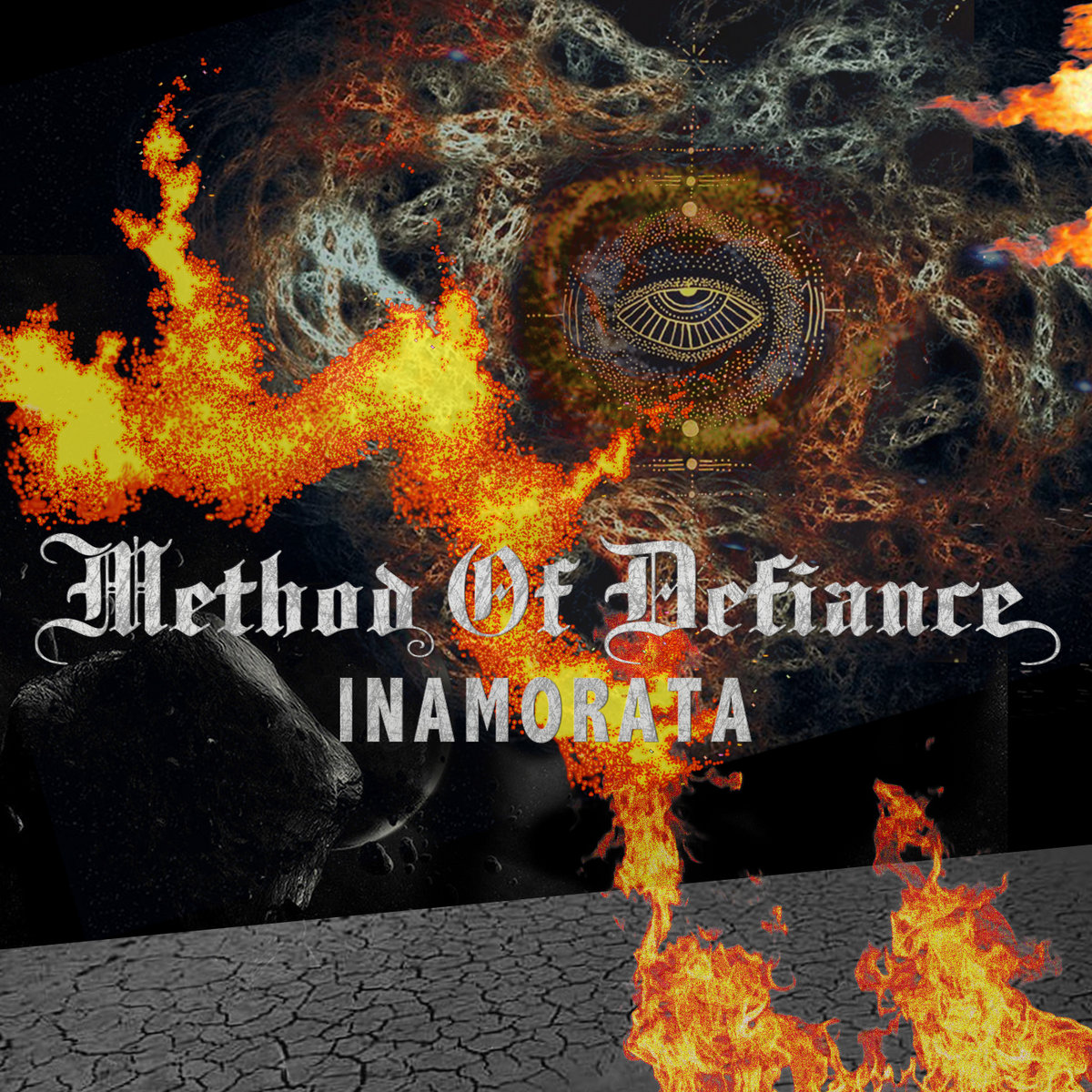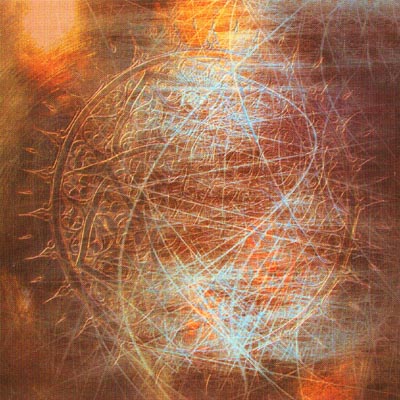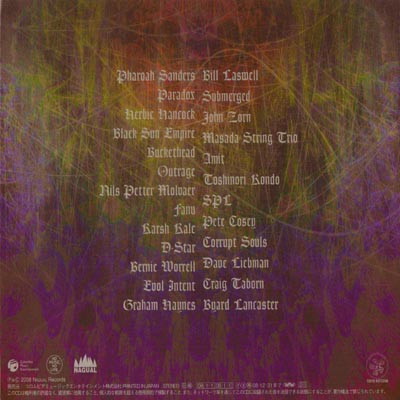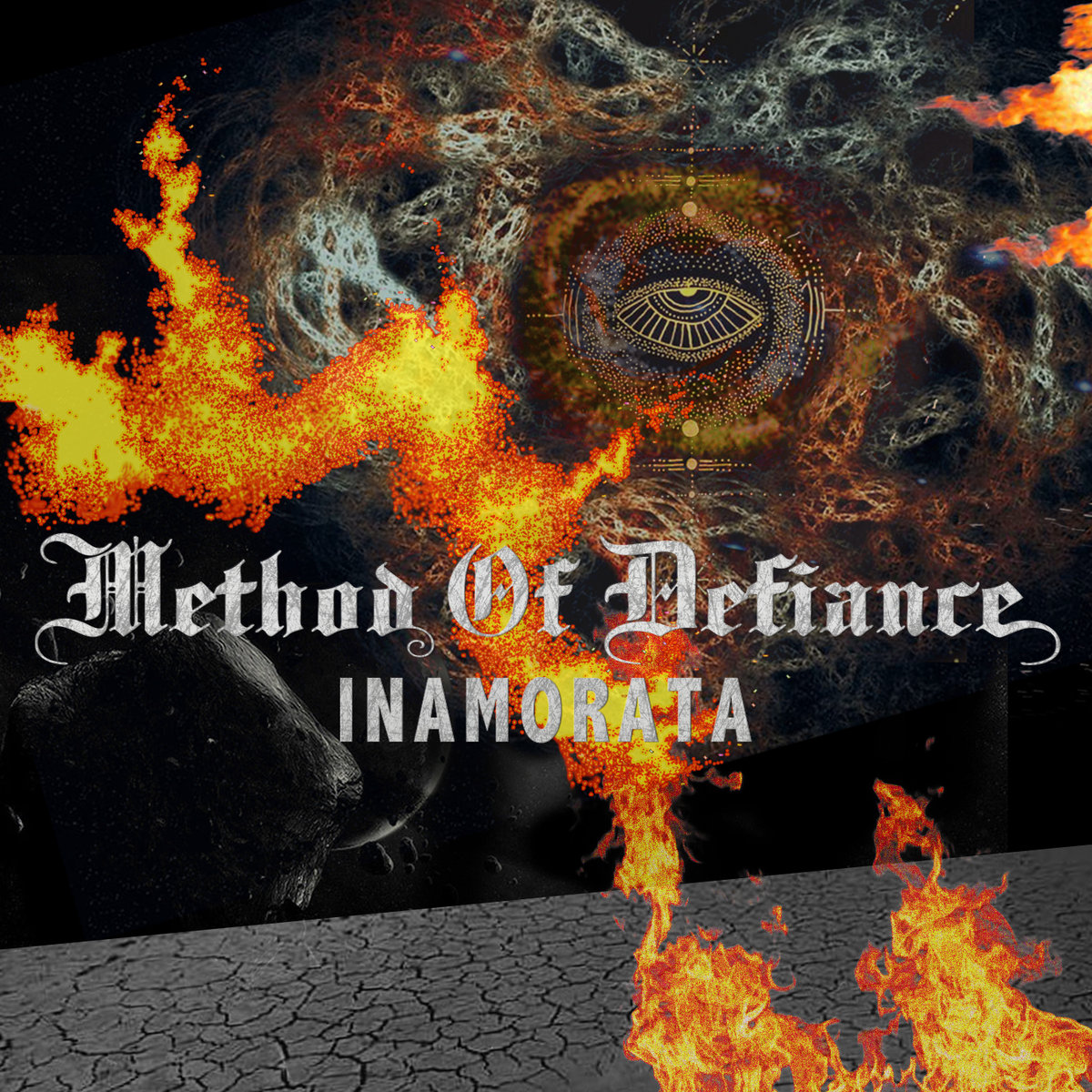METHOD OF DEFIANCE








1/ Ta'wil (Laswell,Gluck,Sanders) 7.56
2/ Humanoid (Laswell,Pandya,Kondo) 4.48
3/ Hidden Killer (BL,Heyboer,Heyboer,Verdult) 4.56
4/ Amenta (Laswell,Cochran) 6.48
5/ Panepha (Laswell,Pandya,Hancock) 4.44
6/ Babylon Decoder (Laswell,Kamboj,Kondo) 5.20
7/ Aibi-Virus (Laswell,SPL,Zorn) 6.41
8/ Anti-Jazz Glitch (Laswell,Ferguson) 6.39
9/ Black Water (Laswell,Hatula) 4.29
10/ Pattern Engine (Laswell,Diasio,Jones) 4.57
11/ Aether (Laswell,Kale,Molvaer) 5.13
12/ Remains (Clark) 6.28
13/ Method 900 (live) (BL,Licata,Doc,Worrell,TK) 10.40
Recorded at Orange Music, Orange, New Jersey and various locations
around the world
Track 13 recorded live at Unit, Tokyo, Japan on August 4, 2007
Compiled at Orange Music, New Jersey
Engineer: Robert Musso
Second: James Dellatacoma
Produced and arranged by Bill Laswell
Additional preproduction and coordination: Submerged and Robert Soares
Cover panel, back panel and inside spread: James Koehnline
Design and fold panel: John Brown @ Cloud Chamber
Mastered by Michael Fossenkemper at Turtle Tone Studio, NYC
Bill Laswell: electric bass, sounds; Submerged (1): beats; Pharoah Sanders (1): saxophone; Paradox (2,5): beats; Toshinori Kondo
(2,6): trumpet; Buckethead (2,6): guitar; Bernie Worrell (2): keyboards; Black Sun Empire (3): beats; Graham Haynes (3,9):
cornet; Pete Cosey (3,4): guitar; D-Star (4): beats; Byard Lancaster (4,9): saxophone; Herbie Hancock (5): keyboards; Amit (6):
beats; SPL (7): beats; John Zorn (7): alto saxophone; Masada String Trio (7): strings; Outrage (8): beats; Craig Taborn (8):
keyboard; Fanu (9): beats; Evil Intent (10): beats; Dave Liebman (10): soprano saxophone; Karsh Kale (11): drums, tabla; Nils Petter
Molvaer (11): trumpet; Corrupt Souls (12): beats.
2007 - OHM Resistance (USA), 5M OHM (CD)
2007 - Nagual Records/Columbia Records (Japan), COCB-53687 (CD)
2017 - Bill Laswell Bandcamp (digital only)
Note: Track 13 appears only on the Japanese issue.
His latest project, Method of Defiance, maintains his cross-disciplinary ideal, though it cleaves to the vocabulary of pure drum and bass. The group, featuring the DJ/programmer Submerged, Guy Licata on drums and Laswell on bass, debuted last year with The Only Way to Go Is Down (Sublight), a blistering nine-track affair.
The new disc, Inamorata, is more expansive, and more directly jazz-related. Laswell produced and arranged the music, but he commissioned a slew of top drum-and-bass artists—Paradox, SPL, Evol Intent, Karsh Kale and more—to create the tracks. He also brought on board an imposing roster of jazz musicians, including Herbie Hancock, Pharoah Sanders, Dave Liebman, Craig Taborn, Nils Petter Molvær, Graham Haynes and Byard Lancaster. The music is combative, a concentrated spray of hyperkinetic beats, fat bass lines, involved solos and ethereal sonics.
Sanders sets the tone with a roaring tenor solo on “Ta’ Wil.” Liebman surfaces later, blowing urgent soprano on “Pattern Engine.” Buckethead and Bernie Worrell are a study in contrast on “Humanoid.” Pete Cosey goes head to head with Haynes and Lancaster, respectively, on “Hidden Killer” and “Amenta.” The most radical is “Aibi Virus,” which jumps rapidly between John Zorn’s skronk alto and the pellucid sound of the Masada String Trio.
After an hour, the fast, hammering beats can sound monochromatic. But the keyboardists do much to broaden the canvas. Taborn’s meditative Rhodes intro on “Anti Jazz Glitch” is a highlight. And Hancock’s multi-tracked electric piano on “Panepha” is ideal, given Laswell’s involvement in the Hancock discography, from “Rockit” all the way to Future2Future.
David R. Adler (courtesy of the Jazz Times website)
Method of Defiance, a so-called supergroup, appears to be little more than a collection of leftovers from a variety of Bill Laswell productions including such famous jazz friends as Herbie Hancock, Pharoah Sanders, John Zorn, Byard Lancaster and Dave Liebman. But even if it is, the result is something greater than the sum of the parts. Here, Laswell teams such drum n bass superstars as Submerged, Paradox, Fanu and Evil Intent with jazz outsiders (Zorn, Lancaster, Buckethead, Craig Taborn) and jazz edgers who either bear a Miles Davis bond (Hancock, Liebman, Pete Cosey on two tracks) or walk in the trumpeter’s footsteps (Graham Haynes, Nils Petter Molvaer). Indeed, the Paradox-Byard Lancaster-Pete Cosey performance of “Hidden Killer” echoes with Davis-Zawinul’s “Great Expectations” as if fed through a Cuisinart. But that’s not criticism. The result is not only fascinating, but really quite appealing. What’s most notable here is the way Laswell weaves all the wildly varying threads together to form a 70-minute drum n bass experience that explores many differing directions with intrepid interest. Bernie Worrell is credited only on “Humanoid,” a four-minute and 48-second sound collage he co-leads with drumfunk expert Paradox (UK producer Dev Pandya), Japanese trumpeter Toshinori Kondo and guitarist/multi-instrumentalist and Worrell’s Praxis mate Buckethead. Worrell explodes with Fender Rhodes flourishes (and possibly celeste), recalling the sounds and styles of both Hancock’s Headhunters and Chick Corea’s RTF, updated most remarkably for a whole new generation. Kondo’s menacing electric trumpet and (probably) Laswell’s popping Space Bass also add dimension for a performance well worth savoring and exploring further, whether you’re coming to it from a funk place or a jazz space. It’s a new kind of funk and a new kind of jazz. It’s a shame that the group’s name, the album’s cover graphics and even the disc’s title suggest some sort of death metal. That’s not the case at all. There is a lot of high-powered talent involved here doing some interesting work outside of their usual clique and miles away from their typical songbooks. If the disc had some hint of Bill Laswell’s participation, front and center, or alluded at all to its dnb-meets-jazz core, this could really shake a few trees. It’s a great idea exceptionally well executed.
Doug Payne (courtesy of the Sound Insights website)